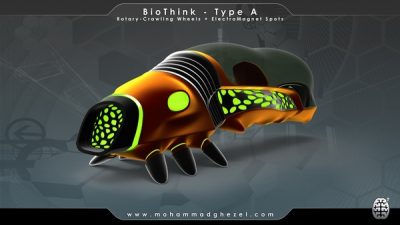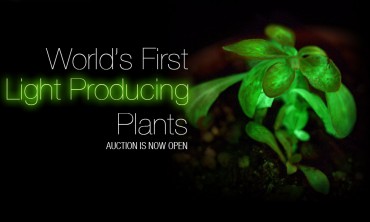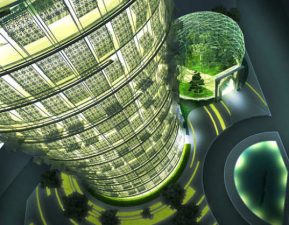 Could the built environment take cues from Mother Nature? When Dutch designer Daan Roosegaarde puzzled this, a light popped on in his head, a light created by genetically modified plant life! He imagined a self-illuminating streetscape (image above).
Could the built environment take cues from Mother Nature? When Dutch designer Daan Roosegaarde puzzled this, a light popped on in his head, a light created by genetically modified plant life! He imagined a self-illuminating streetscape (image above).
He told Dezeen, “I mean, come on, it will be incredibly fascinating to have these energy-neutral but at the same time incredibly poetic landscapes.”
“In the last year I really became fond of biomimicry,” he said. Biomimicry is the imitation of natural systems to solve complex design issues. Consider Velcro, which was inspired when an engineer was removing burrs from his dog’s fur; and Olympic swimsuits that replicate the water-slicing qualities of shark skin; and new adhesives patterned after the clinging ability of gecko feet.
Roosegaarde was specifically fascinated by how animals like fireflies and deep sea creatures generate light.
 “When a jellyfish is deep underwater it creates its own light,” he said, “It does not have a battery or a solar panel or an energy bill. It does it completely autonomously. What can we learn from that?” (Jellyfish use a biological compound called luciferin to emit light.)
“When a jellyfish is deep underwater it creates its own light,” he said, “It does not have a battery or a solar panel or an energy bill. It does it completely autonomously. What can we learn from that?” (Jellyfish use a biological compound called luciferin to emit light.)
His research led him to the State University of New York and Alexander Krichevsky, whose technology firm Bioglow auctioned off genetically modified glow-in-the-dark plants earlier this year.
Bioglow splices DNA from luminescent marine bacteria to the chloroplast genome of a common houseplant, so the stem and leaves emit a faint light similar to that produced by jellyfish.
They’ve teamed up with a goal to create glow-in-the-dark trees. Actually more like twinkling topiary – the final product will be created from a collection of luminescent plants grouped into a tree-like shape.
 Conceptually cool, but who’s looking at health and safety?
Conceptually cool, but who’s looking at health and safety?
The European Union strictly regulates the use of genetically modified (GM) plants, and Roosegaarde is prohibited from using this material in his Netherlands studio; he had to travel to the US to receive his Bioglow plant.
American policy on GM substances are more lax, but building codes are not. Planning permission typically requires an environmental assessment for projects that have a public impact. Shouldn’t the same be required when proposing to turn the trees into street lighting?
Roosegaarde is also working solo on another project called Glowing Nature which does not use GM material, but instead cultivates trees with light-emitting properties similar to those in bioluminescent mushrooms.
He proposes to apply a micro-thin coat of “biological paint” to allow trees to glow in the dark. The solar coating recharges during sunlight hours and can glow for up to eight hours at night. Material trials start later this year.
Sort of head-shaking, that one.
Phosphorescent paints have been around for ages, commercially available, and commonly used to mark emergency escape paths or paint constellations on your bedroom ceiling. They are so popular that WikiHow even offers a tutorial on how to make your own at home (link here).
So what’s Glowing Nature bringing to the table?
These flash-in-the-dark concepts need robust environmental vetting before they can be taken seriously.




2 thoughts on “Safely swap your streetlight for a glowing tree?”
Comments are closed.